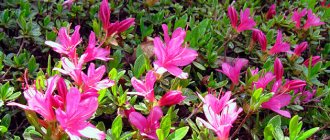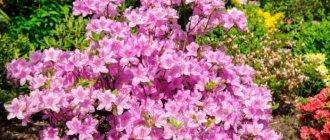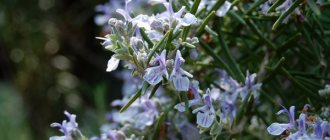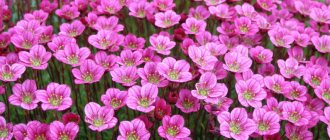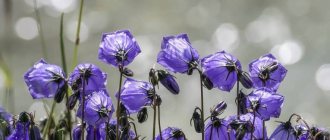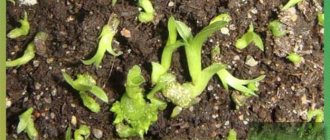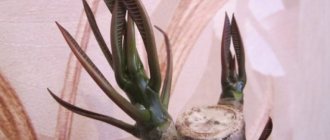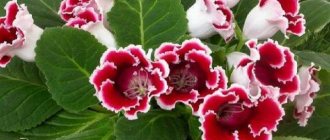Azalea at home after purchase
Immediately after purchase, an azalea seedling needs to be transplanted into suitable soil, because in transport pots the soil is completely unsuitable for permanent maintenance of the plant. It is best to purchase land for azaleas that ideally meets the requirements for growing capricious beauties. You need to replant, trying not to damage the roots, since the plants take a very long time to recover after this procedure.
Free the root from the pot, place it in a new, larger pot and cover it with nutritious soil. You can place a small drainage layer at the bottom of the new pot to protect the plant from overflowing.
The video will tell you how to replant an azalea after purchase:
Features of indoor azalea and care for it
If a new flower appears in the house, then you need to know the characteristics of the azalea, as well as how to properly care for it.
After a flower from a store has been brought into indoor conditions, it should be immediately replanted. Firstly, this must be done so that the flower is comfortable and spacious in the new pot. And secondly, the soil in containers is completely unsuitable for the flower to grow and develop normally in it. The soil should be nutritious, acidic and well-drained. The pot into which the azalea will be transplanted should be slightly larger than the one in which the flower was purchased.
After transplantation, it is necessary to create optimal conditions; to do this, adhere to the following recommendations:
- Lighting. It should be enough, especially during the period of bud formation, since azalea is a heat- and light-loving flower. In winter, special lamps should be used.
- Temperature. Azalea in the wild grows only in tropical climates, and for it it is very important that the temperature is within +15...+18 degrees. For the formation of buds, a decrease to +12 degrees is allowed. It is most difficult to ensure the correct temperature in the summer. You can place the pot on the balcony, but not on the south side, since the summer sun's rays are merciless and can negatively affect the leaves of the flower. In summer, a temperature of +20 degrees is allowed.
- The humidity in the room where the flower stands should not fall below 70%, and 80% is considered ideal. On hot days, the azalea should be sprayed with cool water from a spray bottle. However, you should be careful with this procedure during the flowering period, as the flowers may begin to darken due to the fact that liquid gets on them.
But watering should be carried out according to certain rules:
- Irrigation should be regular, and most abundant during the flowering period.
- The substrate in the pot should not dry out. If this happens, then the azalea should be placed in a bucket of warm water for two hours. This method of immersion will restore moisture in the soil.
- We must remember that the soil should be moist, but not soggy.
- All water that will flow into the pan during watering must be poured out. If you do not do this, you can provoke fungal diseases.
- To ensure abundant flowering, the flower must be watered once every two weeks with settled water and lemon juice. You only need to add three drops of juice to the usual volume of water for a pot.
Azalea also needs feeding. It is better to use mineral fertilizer complexes. When purchasing, carefully read the composition, as fertilizers should not contain chlorine, which can destroy the plant. Flower shops have a complex of mineral fertilizers called “Azalea”. It's perfect for a flower. In spring and summer, fertilizing is applied once a week. And with the onset of winter, their frequency should be reduced to once a month. When flowers begin to set on the azalea, it is necessary to use phosphorus and potassium fertilizers (for example, “Uniflor-bud”).
Caring for azalea rhododendron at home
Often, received as a gift or purchased in a store, a magnificent azalea blooms magnificently for a long time, pleasing the eye, and then, unfortunately, dies - they decide to throw away the plant. In vain! Azalea is simply going through a period of adaptation to apartment conditions. Be patient and attentive: the bush will gradually regain its strength and produce new leaves. Having mastered the basic rules of care, you will become friends for many years with a magnificent beauty that blooms throughout the warm season.
Selecting a location, temperature and lighting
Azaleas need diffused light or weak partial shade along with cool air; the scorching rays of the sun will kill it. It is difficult to maintain coolness in summer: place the plant in the shade, preferably on a western or northern window, and ventilate the room more often.
It would be good to bury a pot of azalea in a shady part of the garden for the summer, protecting the beauty from direct sunlight. Even if you just put an azalea on the balcony, the summer rain will be very useful. You need to return the plant to the room before the start of the heating season. The ideal climate for azaleas can be compared to a warm, foggy autumn - 10-14 °C during the day, 6-8 °C at night, combined with high humidity. The plant feels quite comfortable even at 18-20° C, if you do not forget to constantly moisten the leaves.
Growing from seeds: what is good about this method
Growing azaleas from seeds is an equally labor-intensive process. The method has an advantage over all others in that it is possible to obtain any desired number of copies from scratch at the same time, which is good for production scales. If the seed has sprouted, seedlings will appear within two weeks. The main condition is fresh, high-quality seeds and suitable growing conditions.
This method also has its own nuances. For example, three seasons must pass before the plant is planted in open ground.
How to choose the best seeds
You need to buy azalea seeds in trusted stores that have quality certificates for all commercially available products. The packaging must not have defects, tears, or dents.
The packaging must indicate the following parameters:
- number of seeds;
- best before date;
- manufacturer.
Important! If the seeds are stored in a cool, dry place, they are suitable for use for up to three years. The easiest way to propagate azaleas is from fresh seeds, which can last up to 90 days.
You can collect the seeds yourself. To do this, you need to wait until the end of the flowering period and open the five-leaf box. The seeds are small and elongated, each from 0.5 to 2 mm in length.
The time for collecting material is the end of autumn. The seeds should ripen well, become dark brown in color, while the box remains green. After collection, they are wrapped in paper or cardboard for several days until completely dry.
What should the soil be like for planting seeds?
Seeds are sown in soil with a top nutrient layer or laid out on peat tablets. Sowing period is March-April. You can start propagating azaleas in February, then additional lighting will be required to create a daylight period of 12 hours.
This is interesting: Chrysanthemum from a bouquet - can it be rooted at home, how to grow it
How to grow a lush azalea from seeds? Mandatory conditions for seed germination are sun and moisture. If a greenhouse effect has been created over the growing vessel, then the glass or film is periodically removed for ventilation. In order not to over-moisten the seeds, it is better to irrigate the soil from a sprayer using a special composition: dilute 4 g of oxalic acid in 10 liters of settled water.
Any available container is used for sowing. The bottom of the flowerpot is equipped with drainage holes.
Stores sell ready-made soil mixture for rhododendrons. You can make it yourself from the following components:
- deciduous soil;
- turf land;
- peat;
- sand;
- humus.
All components are taken in equal proportions and pre-disinfected in a solution of potassium permanganate, you can add baking powder.
The most important parameters for the soil:
- water permeability;
- air permeability;
- rich in minerals;
- ease;
- looseness;
- acidity pH 4-4.5.
Important! The soil should be warm before sowing.
Temperature
Standard home conditions are suitable for growing seeds: air temperature 20 °C and bright light. In this situation, the seeds will sprout in 2-4 weeks, the sprouts will appear unevenly. To stimulate growth, it is recommended to spray them with a solution of zircon or epin.
Illumination of plants with a phytolamp
Humidity
The sprouts must be kept in high humidity conditions, so they are covered with transparent material to create a greenhouse effect.
For your information! The hardest thing is to adapt sprouts to new conditions, dry, cool air. To harden azaleas, they are taken into a room with a temperature of 10 °C. This will boost the flower’s immunity and subsequently protect against many diseases.
To avoid flooding the seeds, you can use the bottom watering method. In this way, the sprouts receive the necessary nutrition and the root system is stimulated.
How to water an azalea
The fundamental requirement for caring for azaleas is to water regularly, but not to over-water it, and to avoid stagnation of water and drying out of the soil. The soil should not be wet, but slightly damp. To prevent the soil from becoming alkalized after watering with tap water, alternate watering with plain water and acidified water - sometimes add 2 g of citric acid per liter of water and water the flower, but not often).
With the onset of autumn, after flowering has ended, reduce watering slightly. If the flower is in peat soil, which poorly absorbs moisture when it dries out, sometimes place the pot in a basin of water for up to two hours. It is important to remember that heat and dry air are detrimental to the plant: the azalea will begin to shed flowers and leaves.
During the heating season, constantly spray the leaves of the plant using a fine spray from a spray bottle. You can place the azalea pot on a tray of wet pebbles, but do not allow the pot to come into contact with water. Ideally, water and spray with rain, melt or river water, but at least with softened water - it should sit at room temperature; cold water should absolutely not be used.
Dividing the bush
Planting and caring for azaleas in the fall. There is another method of propagation - dividing the bush . Azaleas are planted using this method in the fall. After the plant has finished flowering, collect all the faded buds from it. Remove the plant from the pot, carefully divide the bush into two parts and plant each in a separate container.
Do not bury the root collar; it should be 5 centimeters above the surface. Lightly compact the soil, but do not compact it too much, otherwise the roots will not be able to breathe. After planting, place the pots in a cool, dark place.
And also, by dividing the bush you can propagate plants: Saintpaulia, Eversa, Sedum.
Transplanting and feeding rhododendron azaleas
Azaleas prefer acidic soil. A mixture of heather soil is ideal for azaleas, peat soil is possible, a mixture of coniferous soil in two parts and one part peat soil with a small addition of river sand is good, hydroponics is a good choice. Flower shops sell special soil intended for acidophilic plants, also suitable for azaleas. You should choose a pot that is not high, since the roots of the flower have a superficial structure.
Loosening the soil while caring for a flower is strictly prohibited in order to avoid destruction of the root system; for this reason, the plant is handled rather than replanted. Young flowers need transshipment only once a year in the spring, adult plants - once every 2 or 3 years. Replant without disturbing the earthen coma, adding a large amount of new soil.
To feed in spring and summer, use fertilizer for azaleas once a week; in autumn and winter, to plant buds, use a solution of 15 g of superphosphate per 10 liters of water every 2 weeks.
How to transplant an azalea, look at the video:
Propagation by cuttings - advantages and disadvantages
It should be borne in mind that when growing a plant such as azalea, propagation by cuttings at home is fraught with poor survival rate, since the plant is quite whimsical. The main advantage of cuttings is that the species characteristics of the plant are completely preserved. To activate the growth of azaleas, the soil must always be moist. Heating and lighting play an important role in the development of culture, so they are created artificially. In the first year of life, the azalea should begin to actively develop. If this does not happen, she will most likely die.
Separation from the main flower
Young healthy shoots are chosen as the material. Use sterilized garden tools - a knife, pruning shears, scissors.
- The cutting is cut at an angle of 45 degrees, 1 cm away from the lower bud.
- The lower and upper leaves are removed, leaving 4 leaves, cutting them in half.
- The cut is treated with a root growth stimulator, the cutting is left for several hours so that the stem dries out and is saturated with Kornevin.
Their survival rate depends on how well the cuttings are selected for germination.
How to determine that the shoot is ready for separation?
- Deciduous rhododendron cuttings are ready to be taken as long as they are soft in the stem and do not break.
- Evergreen varieties of rhododendron show readiness for cuttings with a dry crease of the stem. At the same time, the characteristic crunch of breaking wood is heard.
The cutting is always taken from an adult healthy plant without signs of visible external damage. Azaleas are pruned into cuttings once a year so that the mother plant has the strength to further ripen buds and flower.
Mature azalea bushes need pruning to form a beautiful and even crown, so even if it is not propagated, this is part of basic care.
How to plant
Before planting in the ground, the cuts are treated with a solution of potassium permanganate. The stems are planted in the ground at right angles to a depth of 3 cm. The soil should be highly acidic. Soil for azaleas is sold at gardening stores. Prepare the mixture yourself, combining pine litter, sand and peat in equal proportions.
Attention! You can prepare the soil for seedlings yourself. Before planting the cuttings, the soil is calcined in the oven.
After planting the cuttings in a pot, cover it with film and place it in a warm place.
Rooting cuttings
Experienced flower growers know how to root an azalea in water using a growth stimulator. You can try this option for experimental purposes. Great results can be achieved by rooting cuttings in the ground.
The conditions for the survival of the stems are sufficient watering and the presence of a greenhouse, which must be constantly ventilated.
The seedlings are provided with a house temperature of +22..+25 degrees, humidity of at least 80%.
Rooting cuttings
What soil is suitable for rooting
Before rooting an azalea, the seedling is dipped in a root stimulator for 5 hours. Heteroauxin will come to the rescue, two tablets of which must be diluted in 1 liter of water. You can also use zircon or root.
Indoor rhododendron requires a special soil composition. For propagation, loose acidic soil is used. The shoots are buried 2 cm at a distance of 3-4 cm from each other or in a 4x4 pattern. Universal soil is not suitable for propagation and cultivation; you need to find a special mixture for azaleas/rhododendrons or slightly decomposed peat.
Which pot should I put it in?
Since not all rhododendron shoots can be rooted well even with careful care, experienced gardeners grow five or more young plants at a time . In this case, a greenhouse is built. For this purpose, take a box or box and, after planting the cuttings, cover the container with film or a light-transmitting cap to maintain a comfortable temperature for the young animals of 22-25 degrees. The plants are planted at a distance of 4 cm from each other.
This is interesting: Pruning raspberries: tips for gardeners and gardeners
If you manage to obtain single cuttings for planting, you can use small pots with a diameter of 5-7 cm, which will need to be covered with a transparent bag or a cut plastic bottle.
Periodically, the container with seedlings needs to be ventilated to prevent the shoots from rotting. It is also necessary to turn it towards the sunlight with the opposite side for uniform illumination.
The cuttings rooted in the box are planted in separate pots, not earlier than they have begun to grow well. The size of the individual bowl should be slightly larger than the root ball with soil. As it grows, you can transfer it to a larger pot.
Azalea is not an easy plant to propagate and requires a lot of effort and attention , so you should approach every step of cuttings responsibly!
Humidity during rooting
Rhododendron loves high humidity. Watering is carried out moderately as the soil dries. If you're lucky, within a month the seedlings will take root. Good survival rate is indicated by the appearance of its own shoots. If this does not happen, the sprout will most likely die in the near future.
Note! Seedlings of large-leaved evergreen azaleas take up to four months to take root and simply do not grow for several more months.
The breeding season for azaleas at home lasts from March to October. Any manipulations can be carried out only after the plant has flowered. For better growth, seedlings are covered with a jar or film and can be sprayed. Once a week, the greenhouse is removed and the plant is ventilated.
After rooting, the sprouts are gradually accustomed to the dry air of the apartment. To do this, the film is removed from the seedlings first for 2-3 hours, then for 4-5 hours, etc. After transplanting the azaleas into separate pots, they are again covered with film for two weeks so that they quickly and painlessly take root.
Caring for cuttings after rooting
To understand how azalea reproduces and not to lose a seedling after rooting, you need to follow a number of rules for planting cuttings in the ground.
After the first leaves appear, remove the film from the greenhouse for several hours every day. After a week of hardening, the seedlings can be planted in separate containers with prepared soil.
Pots should be no more than 10 cm wide, with drainage placed at the bottom. The cuttings are replanted with an old clod of earth. Further care is carried out as for an adult bush. If buds appear, they need to be torn off to form a strong tree.
Temperature and lighting
For breeding, the brightest and warmest place in the house is used. For successful rooting, the air temperature must be maintained at about 25 ° C. There should be no drafts in the room, and the air should not stagnate, so the room should be ventilated periodically. If possible, the bottom of the pot is heated to 27 °C.
Cutting size
When can I expect results?
If the flower was planted 3 or 4 months ago and all planting conditions are met, then you can notice the first changes. As soon as the growth reaches 3 cm, you can remove the film from the greenhouse and plant the cuttings in separate pots, adding expanded clay to the bottom.
Do not suddenly abandon film cover. It is better to start accustoming a young azalea to changes in external conditions from one and a half hours a day, gradually increasing the time period by one hour a day.
Pruning and shaping the azalea crown
Pruning an azalea can be described as shortening last year's shoots, removing weak, closely growing branches in order to create a neat crown with a uniform arrangement of flowers. For a beautiful crown, constant pruning and pinching is necessary. Remember, increased branching of the bush can interfere with flowering.
For late varieties of azalea, removal of excess shoots is carried out from the beginning of May, for early varieties - in March. When pinching the tops, leave 4-5 leaves on them, and also cut off the shoots next to the flower buds. At the end of summer, when the plant begins to lay flower buds, it must be pruned correctly; if pruning is late, the buds will not form. At your discretion, the azalea can be decorated as a tree, bush or bonsai.
Azalea after flowering
After flowering, rhododendron needs rest. This is the best time for pruning and replanting: remove all excess shoots, cut off the flower tips of the branches and carefully replant the beauty using the transshipment method, only partially replacing the soil. This procedure will allow the plant to gain strength for the next season. Remember that you can prune azaleas only until the end of summer so that the plant has time to set flower buds.
When the plant takes root, watering begins to be reduced, placing the azalea in dormant mode until approximately February.
How to propagate azalea from cuttings
Azalea cuttings photo
Propagating azaleas by cuttings is the easiest and most successful way.
- In March-June, apical semi-lignified cuttings 5-8 cm long are cut, rooted in coniferous soil, having previously treated the cut of the cutting with a growth stimulant, and should be planted to a depth of 1-2.5 cm.
- Build a greenhouse using a glass jar, be sure to ventilate, irrigate, water, and maintain a temperature of 25 ° C.
- When new shoots appear, it will become clear: rooting was successful. Continue watering and irrigation, do not forget about acidified water. After a couple of months, the plants can be opened slightly and accustomed to the conditions of the apartment.
With due attention, almost all seedlings are accepted.
The video will tell you how to cut an azalea:
Propagation by cuttings
How to grow an azalea from cuttings? When rooting cuttings, take into account every little detail, otherwise you will not succeed. Preparations for propagation are cut at the end of winter - beginning of spring, or in June. Adult specimens with non-woody shoots are suitable for these purposes.
The cuttings must be mature. To check the quality, break it, it should make the characteristic sound of breaking wood. The cutting must have a mature bud and leaves of normal size.
How to plant azalea from cuttings? A workpiece measuring 15-20 centimeters is treated with a growth stimulator for 15-16 hours and rooted in a special substrate. There is a special soil on sale with an acidity of 3.5-4.5. You can use soil from a coniferous forest.
A drainage layer of about 3 centimeters is placed in the dish. The next layer is sand (3 cm). Then a mixture of peat and coniferous soil.
The cuttings placed in the ground are covered with glass. The temperature for rooting should be about 24 degrees .
If the room temperature is not high enough, heat the bottom of the container.
In addition to heat, light is needed for rooting. The plantings are regularly sprayed and the dishes are turned periodically. The roots appear in three to four weeks, but they begin to grow in 4-5 months. The film is removed only after this.
The cuttings, grown 3 centimeters, are planted in pots in coniferous soil. The process is combined with pinching to form a lush bush. To increase the leaf mass, the buds that set are removed. At the beginning of spring, a second pinching is carried out.
IMPORTANT. After germination of the cuttings, the azalea growing temperature is reduced to 18-19 degrees.
Growing azaleas from seeds at home
Sowing seeds is a rather difficult method used to breed new varieties and is not recommended for use at home. However, many enthusiasts have successfully grown rhodendrons from seeds.
Azalea seeds photo
Armed with patience, begin sowing azalea seeds in January-February. Fry the prepared soil in the oven and cool; this procedure will protect the plants from many diseases. The seeds are laid out on the surface of the substrate at a distance of 1.5-2 cm, sprinkled with water and covered with a transparent lid or bag. The optimal temperature for germinating azalea seeds is 18-22°C. The containers are initially shaded with opaque material.
When the shoots appear, they are provided with good lighting, but the shelter is not removed yet. After a while, thin shoots need to be strengthened: with a stem height of 2-3 cm, peat is carefully poured between them. This way, new roots will form, and the seedlings will not become thin and fall down.
Azalea seedlings from seeds photo
When 3-5 true leaves appear, the plants are planted separately in cups, still providing greenhouse conditions (the cups are covered with bags). Only when the bushes grow and get stronger, will it be possible to gradually accustom them to independent life without shelter, removing it first for a while, and then for good.
Video about sowing and growing azaleas from seeds:
The successful experience of passionate gardeners confirms that it is indeed possible to grow azaleas from seeds, you just need to put in a little more effort. The process is not difficult, but it requires patience and diligence.
What are the rules for keeping azaleas?
Caring for and successfully growing indoor azaleas at home requires strict compliance with the following conditions:
- The temperature of the content is not higher than 20-21 degrees. A warm atmosphere will cause the leaves to wilt. You can artificially maintain the required temperature by covering the ground with snow or pieces of ice. During the cool season, keep the plant near an open window.
- Lighting is another condition. Azaleas should be kept in the brightest place, but not in direct sunlight. This is especially important during the flowering period. If natural light is not enough, arrange lighting.
- Humidity is the third condition. Water the azalea regularly; the earthen ball should not dry out. It is also necessary to maintain air humidity. Only waterlogging should not be allowed to avoid root rotting.
How to replant an azalea and divide the bush
How to propagate an azalea by dividing a bush photo
Azalea bushes grow over time and become cramped in the designated pot. This means it’s time to start the process of transplantation and division. Water the plant thoroughly and leave for several hours. Afterwards, carefully remove the pot from the earthen ball and try, without damaging the roots, to divide the bush into separate parts. Azalea roots are superficial and quite fragile. We try to choose a wide, stable pot that will give the plant room to grow wider.
How to properly transplant young azaleas into a separate pot
How to propagate Decembrist at home: examples without roots and leaves
Rhododendron tolerates transplantation well. If young azaleas begin to feel unwell after changing the pot, it is most likely due to poor soil or unsuitable external conditions. Leaves will turn yellow and fall off if the soil lacks minerals or the soil is not acidic enough.
Azalea is replanted when several true leaves appear on the sprouts, and then annually. Adult specimens are replanted after flowering every three years.
You will need the following equipment:
- a pot with a diameter of 10 cm for the first planting or one size larger than the previous one for annual planting;
- sharp knife (for cutting dried leaves and buds);
- pine bark, dry moss, baking powder (additive to the substrate);
- charcoal (for soil neutralization);
- drainage;
- pure water;
- zircon or epin solution to stimulate the growth of the root system.
Particular attention is paid to the roots. To avoid damage, azaleas are replanted together with an earthen clod or by transshipment. The roots of azaleas have a special microflora, so the plant will die if it is damaged. You should also be careful with the root collar; if it is buried in the soil, the plant will wither.
Azalea before the first transplant
Important! If you replant an azalea in winter, this will negatively affect its flowering.
After transplanting, the soil is watered abundantly, then an interval of four days is maintained.
How to propagate azalea correctly? Light, moisture, acidic soil and patience are what you need to get new rhododendrons at home. Also, high-quality material is a guarantee of good seed germination and rooting of cuttings, so it is better to spend time searching for them, and within a few months the azalea will delight the eye with its lush crown.
Diseases and pests
Diseases:
Unfortunately, azalea is prone to many diseases of indoor flowers: powdery mildew, gray mold, rust, etc., but everything can be cured with appropriate medications that are easy to purchase at a flower shop.
Pests:
Greenhouse whitefly, with the accompanying sooty fungus covering the leaves, viral infections that come with the pest; mealybug leads to almost death. Moths, caterpillars - eat leaves; strawberry mite – leads to leaf curling and bud shrinkage; flat red mite - leaves turn brown and fall off.
Azalea is quite finicky and troublesome to care for, but having mastered the nuances and provided favorable conditions, you will get a plant of unique beauty, covered with outlandish flowers. With proper care, the plant will not be susceptible to disease, will take on a beautiful shape and will delight you with its magnificent flowering year after year.
How to choose the right one, where and for how much to buy?
Buying seeds for growing is not difficult.
It is more difficult to choose quality ones. There are a lot of seed stores. Many buyers are tempted by seeds with a beautiful picture on the package and low cost. Unfortunately, very often what grows is exactly what is shown in the picture.
A few tips on how to avoid getting into trouble when buying seeds:
- Buy seeds only in trusted places where there are certificates for the product.
- Carefully inspect the packaging. It should be intact, with a well-printed design and clear inscriptions.
- Find out how many seeds are in the package.
- Pay attention to the production date.
Attention! Under the right storage conditions (dry and cool place), the shelf life of the seeds is on average 2-3 years.
Where to buy seed material?
Nowadays, finding seeds will not be a problem:
- There are special stores where you can find seeds of both quite rare plants and the most common ones.
- There are also garden centers where not only seeds, but also seedlings are presented in a large assortment.
In such centers you can also buy all related products for planting flowers. Let's say there is a Yasenovo garden center in Moscow. The price for sowing material ranges from 50 to 200 rubles. In St. Petersburg there is a chain of stores “House of Seeds”, in which the price for seeds starts from 18 rubles. - But the most common way to purchase is to purchase seeds online.
There are many websites that sell throughout the Russian Federation. The price in such stores can range from 100 rubles to 200 rubles. The price of azalea directly depends on the plant variety. - There are also online stores that are not Russian, but Chinese. On such sites you can buy seeds from 26 rubles plus free delivery.
Types of home azaleas with photos and descriptions
The enchanting azalea, called Azalea in Latin, is a member of the genus Rhododendron, family Ericaceae, making up a group of species that was previously only a separate genus of plants.
Giving flowering in cold winter and filling the house with a spring mood, azalea, also called rhododendron - “pink tree”, enjoys stunning success among gardeners.
In its natural environment, azalea grows in Japan, China, southern Europe and North America, including Southeast Asia. Revered in the East as a symbol of joy and peace, popular for bonsai. The flowering is striking in its beauty and variety: simple or double flowers, corrugated or fringed, white, red, various shades of pink, purple or variegated. This miniature, compact, well-branched bush is distinguished by its flowering period, which occurs earlier or later.
The ancestors of home breeding of azaleas were two original species:
Indian azalea or azalea rhododendron Sims Rhododendron simsii
Indian azalea or azalea rhododendron Sims Rhododendron simsii photo
The shoots are covered with bristles, charming flowers with a diameter of 3.5 cm are funnel-shaped, two-colored, and can be speckled.
How to care for seedlings?
Let's consider what care is required for sprouted plants.
- As soon as the seeds germinate sufficiently, it is necessary to remove the greenhouse.
- After this, the containers should be placed in a cool place, with a temperature of 8-12°C. This hardening will help avoid diseases in the future.
- It is better to make the lighting shaded during this period.
- Seedlings should not be watered for 2-3 months. Regular misting is sufficient to maintain moisture.
- Seedlings should be fed once every 2 weeks until July. You can use store-bought fertilizers for rhododendrons or azaleas. Or mineral fertilizers: urea, nitroammophoska.
